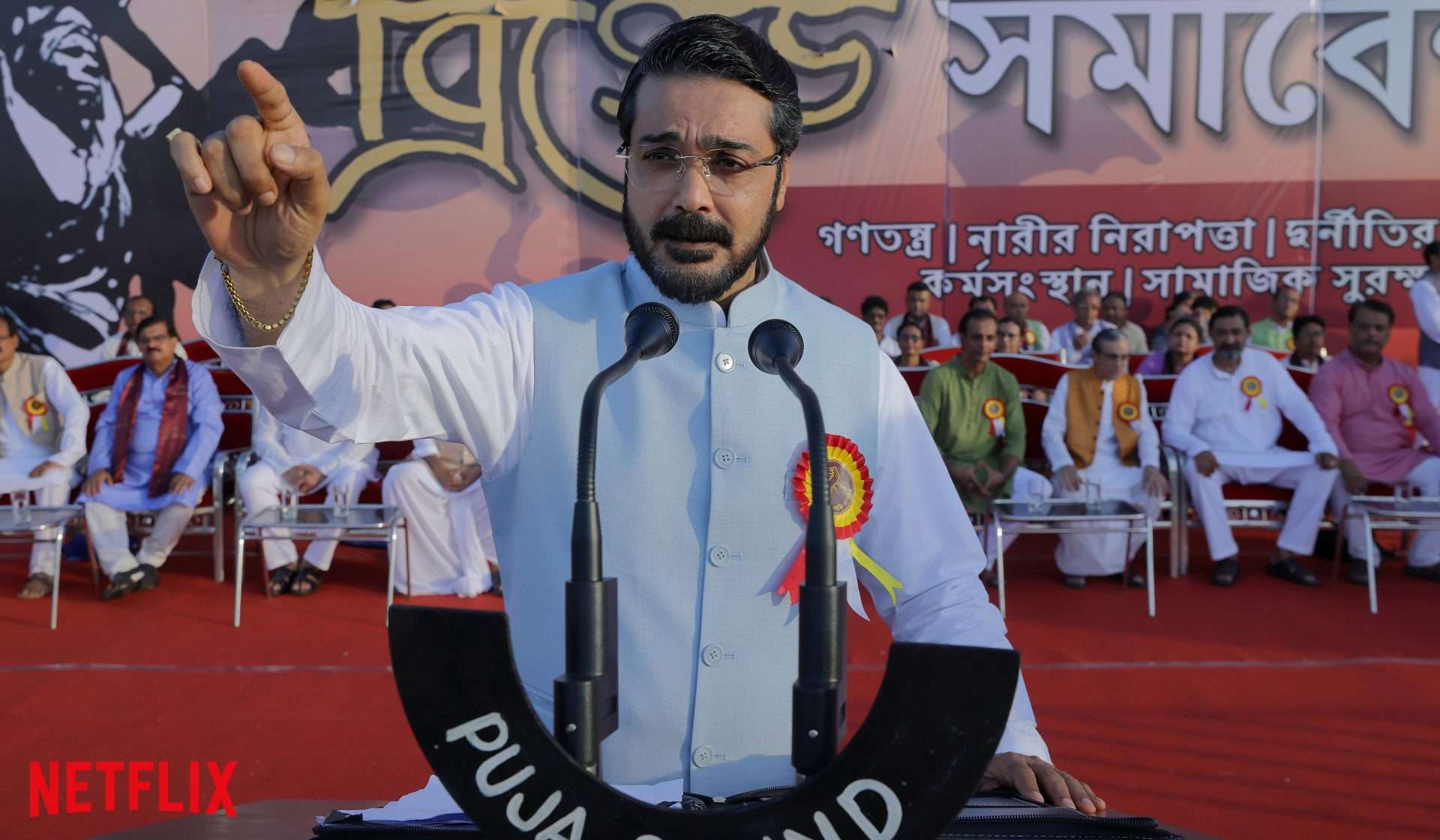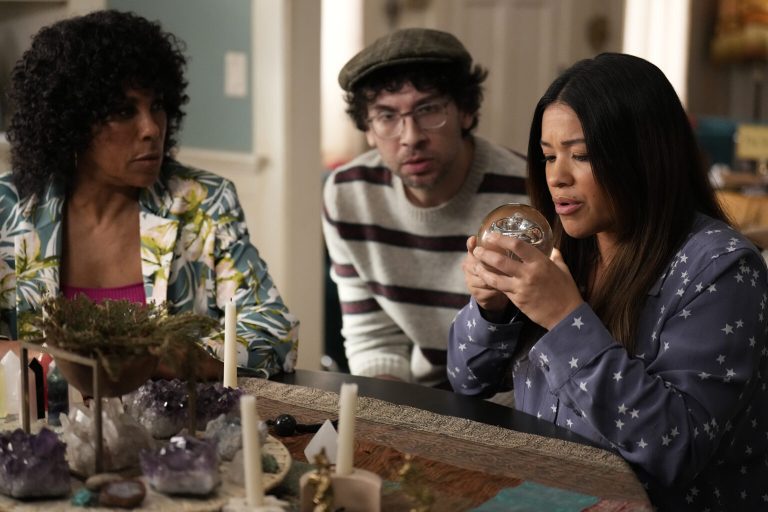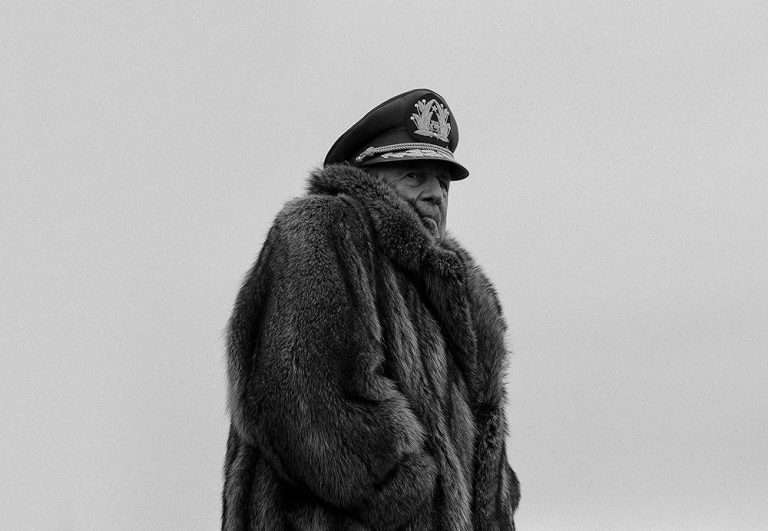In the second episode of “Khakee: The Bengal Chapter” (2025), a pivotal scene between the General Secretary of the Ruling Party and resident puppet master, Borun Roy (Prosenjit Chatterjee), and the newly inducted head of the Special Investigative Task Force, Arjun Maitra (Jeet), sees Roy explaining the system as a symphony, with each section contributing to the evocation or efficient running of said symphony/system.
I suppose that could be the baseline driving the creative direction of Neeraj Pandey as he shepherds a spin-off/second season of his popular 2022 series—”Khakee: The Bihar Chapter.” Like its progenitor, this “chapter” is also researched and based on true events, but it constructs an original story around those events. Writers Debatma Mandal and Samrat Chakraborty, along with Pandey, set the story majorly in 2002, with key moments flashed back to 1991 and one specific origin story to 1988.
In this iteration of Kolkata, the ruling party has blended its roots with the criminal underworld. Politician Barun Roy and gangster Shankar Baruah, AKA Bagha, preside over this nexus. Roy essentially runs the government, controlling a puppet Chief Minister, Shirshendu Mondal (Shubhasish Mukherjee). At the same time, Baruah rules over the underbelly with his two assistants—Sagor Talukdar (Ritwik Bhowmik) and Ranjit Thakur (Aadil Zafar Khan)—gangsters but with contrasting personalities of the cerebral and the brawny.
The opposition party leader, Nibedita Basak (Chitrangada Singh), is essentially a one-woman army leading the charge and holding protests against the malaise-infested ruling party. The inciting incident would begin with a wrongful kidnapping, the appointment of honest cop Saptarshi Sinha (Parambrata Chattopadhyay) as head of the SIT, Sinha essentially trying and failing to put a dent in the criminal activity, and finally the death of Sinha at the hands of Sagor and Ranjit as a result of a power move that causes a domino effect, beginning with the appointment of trigger-happy “honest” cop Arjun Maitra.

There is a distinct pleasure in watching a well-oiled machine operating as exactly as it had intended, without many hitches. “The Bengal Chapter” is essential—a plot-heavy story integrating multiple characters and their ambitions into a blender, resulting in ego clashes, bloody violence, and erosion of friendship, as well as strategizing to put two forces against each other.
As a cop and gangster saga, “Khakee—The Bengal Chapter” is perfectly serviceable. It follows the directive of the “Bihar Chapter” by not just being geographically specific but also being language specific just enough that Bengali not only becomes the language most utilized in the script but is also the language that the majority of the actors are more seasoned and comfortable in. Thus aesthetic and somewhat cultural specificity isn’t much of an issue here, especially considering a majority of the filmed locations aren’t studio-restricted but have been shot in location, which is rather admirable.
The problem is the lack of cultural and political specificity within the show itself. Subrek Banerjee’s research into the true events and framing those events within the context of the fictional narrative might provide a skeleton, but the lack of any detailing of the politics in a show dealing with the nexus of politics and crime results in a show that is utterly flattened.
As much as the show casts Bengali actors and is open enough to ensure the smattering of Hindi, English, and Bengali in the dialogues is equivalently spread, the regional specificity around each of these Khakee shows feels ultimately gimmicky. It feels almost like a crèche for launching regional actors and stars into the global limelight, pandering to the largest denominator of the audience by being as inoffensive as possible. But that essentially robs a story, a city, and a state with a highly checkered, bloody political past like Kolkata and West Bengal, respectively, of its identity and thus its uniqueness.
Thus it becomes a traditional cop and gangster saga, which it manages rather well. The main emotional throughline of the show is the friendship between Sagor and Ranjit and how that falls apart due to the influence of politics via Barun Roy and the administration via Arjun Maitra. As Sagor, Ritwick anchors the show, creating a character both charismatic and one to root for with a very complicated show where morality theoretically shifts its skins. Aadil Zafar Khan as Ranjit carries that unpredictable hotheadedness that makes him both lovable and terrifying. I, however, did not appreciate an action taken by Ranjit to hammer home the point of his character going bad, because it robs the character of any empathetic connection with the audience, as well as paints the show in a bad light with regards to its handling of female characters.

For the most part, the show exhibits these female characters as capable and independent until plotting throws a wrench in said characterization. Aakanksha Singh’s portrayal of Aratrika as a member of the SIT is mostly one-note, further hampered by her character being used as a framing device to espouse the story of the series, explain the emotional motivations and the plot, and service a twist that mostly feels shoehorned in. Both Pooja Chopra and Shruti Das, as spouses of Arjun and Sagor, respectively, are given cursory character flourishes.
One of the female characters would also be fridged, just for added motivation for one of the male leads. Chitrangada Singh as Nibedita Basak is given a backstory and some interesting character wrinkles but doesn’t contribute much to the plot until the final few minutes of the season. By that point, any parallels to her character and her real-world counterpart are too far apart to make any credible sense, even though her character is designed to reflect that history and also to foreshadow the fall of the ruling party.
Jeet, as the ostensible lead of the show, is remarkable precisely because of how much of a part of the plot he is in, rather than letting his stardom dictate the storyline. Expecting a nuanced characterization is perhaps too much, but Jeet being restrained mostly works in the character’s favor. Prosenjit as the insidious puppet master is having a ball, while Saswata Chattopadhyay in his limited role is so capable that he produces one of the rare subtle moments of the show.
“Khakee: The Bengal Chapter” is another watchable mediocre fare from the stable of Netflix India and Neeraj Pandey. Fans of Jeet and Bengali commercial cinema might lap it up, even if to see Jeet in a somewhat different avatar than one is used to. Sometimes plot-heavy, propulsive narratives with good cinematography and awkwardly staged action set pieces are the course for the day, but expecting incisive and nuanced storytelling would be overstretching the musical prowess of this symphony.








![Emperor Putin [2022] Review – The Many Deadly Strategies of a Power-Hungry Tyrant](https://79468c92.delivery.rocketcdn.me/wp-content/uploads/2023/03/ep-768x423.jpg)
